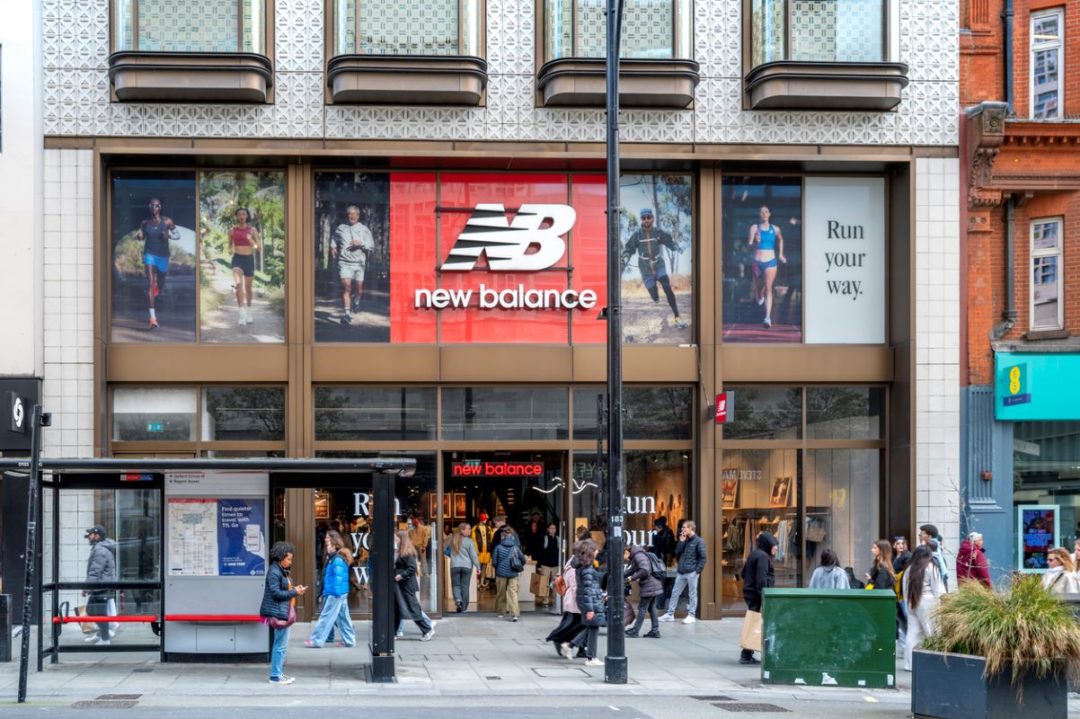
Photo: iStock.com/Stefan Sutka
How New Balance Has Weathered Years of Supply Chain Disruptions
The recent flurry of crises in global supply chains has awakened at least some shippers to the need to prepare for the next big disaster.
The Houthi rebel attacks on Red Sea shipping have forced many carriers to reroute their vessels around Africa’s Cape of Good Hope, resulting in prolonged transit times and increased cost. But that hasn’t fazed New Balance, according to chief operating officer Dave Wheeler.
For the big maker of athletic shoes and sportswear, it was “just another disruption” to be dealt with. “Fortunately,” says Wheeler, “we’ve built a pretty strong muscle in that area” since the coming of the COVID-19 pandemic.
That and other recent events, including the 2021 six-day blockage of the Suez Canal by the containership Ever Given, prompted New Balance to put into place a network of “people, process and technology” that could respond to unanticipated challenges to the company’s supply chain.
In the Red Sea, Wheeler says, New Balance benefited from strong relationships with carriers that helped to prioritize its cargo. And even though it had to divert some shipments, “we didn’t incur any significant increase in cost.”
The recent expansion of New Balance’s distribution network has proved fortuitous. The company just opened up a 400,000 square-foot warehouse in Nashville to serve the U.S. — “our largest market by far.” With the new facility in place, it was able to reroute some product from Asia through the U.S. West Coast, then transfer to rail, resulting in a delay of six to seven days instead of the 15- to 16-day lag caused by going around the tip of Africa.
Worse than sustaining the extra expense of vessel rerouting is the failure to have product on retail shelves when consumers want it, Wheeler says. “My job is to minimize that impact.”
New Balance also maintains a large warehouse in Southern California, solely for footwear, which is fed by shipments coming through the Port of Los Angeles.
The company’s efforts to mitigate disruption in international supply chains actually goes much further back than the 2020s. In the 1970s and 1980s, nearly all athletic brands took production offshore to Asia. But New Balance kept at least a portion of its manufacturing domestic. Today, it operates five factories in the U.S., including a new $60-million plant in New Hampshire, and another in Maine, which is being doubled in size at the cost of another $65 million. Yet another factory is in the United Kingdom, helping to diversify production serving consumers in more than 100 countries.
When it comes to manufacturing overseas, the company aims for a 60-30-10 split of production of a given shoe model among three locations. No one country handles 100% of the work, as part of a corporate strategy of mitigating the risk arising from the shutdown of any one plant.
“If one goes down, we at least have backups,” Wheeler says, adding that New Balance strives to maintain good relationships with suppliers so that it can shift sourcing on short notice. Through the use of 3D modeling and digital systems, it can quickly convey product-design specs to another manufacturing site.
Even when COVID-19 hit, the company already had the flexibility to respond to the shutdown of a major plant in Vietnam, Wheeler says. But what happens when the pandemic spreads, and the whole world essentially comes to a standstill? Wheeler says New Balance had some breathing room to respond because the plant shutdowns moved around the world sequentially. “From a supply chain sourcing perspective, it didn’t all happen in one place.”
The company was further challenged to flex when Massachusetts General and Harvard University asked it to begin producing face masks at the height of the pandemic. After a weekend spent on design, it called in 60 employees at its plant in Lawrence and proceeded to turn out more than a million masks over the next six months.
At the heart of New Balance’s manufacturing strategy lies the company’s new Innovation Center, a 45,000 square-foot building in Boston. It’s dedicated to formulating “the latest and greatest breakthrough technology,” Wheeler says, with a particular emphasis on supporting domestic and local production.
More modifications are in the works on the technology side. This year, New Balance is installing a new enterprise resource and supply chain planning suite, to revamp data systems that are more than 25 years old. And it’s two and a half years into an initiative to centralize control over all North American manufacturing functions, with the acquisition of systems from Microsoft and o9 Solutions. The entire effort “will give us a digital brain, with a whole lot more inputs,” Wheeler says. In particular, the use of artificial intelligence to enable predictive supply and inventory planning “will be a quantum leap for us.”
No major technology transformation comes without the risk of glitches during implementation, however, and Wheeler is holding his breath in hopes of a smooth transition.
“It’s going to be a white-knuckle experience,” he says.
